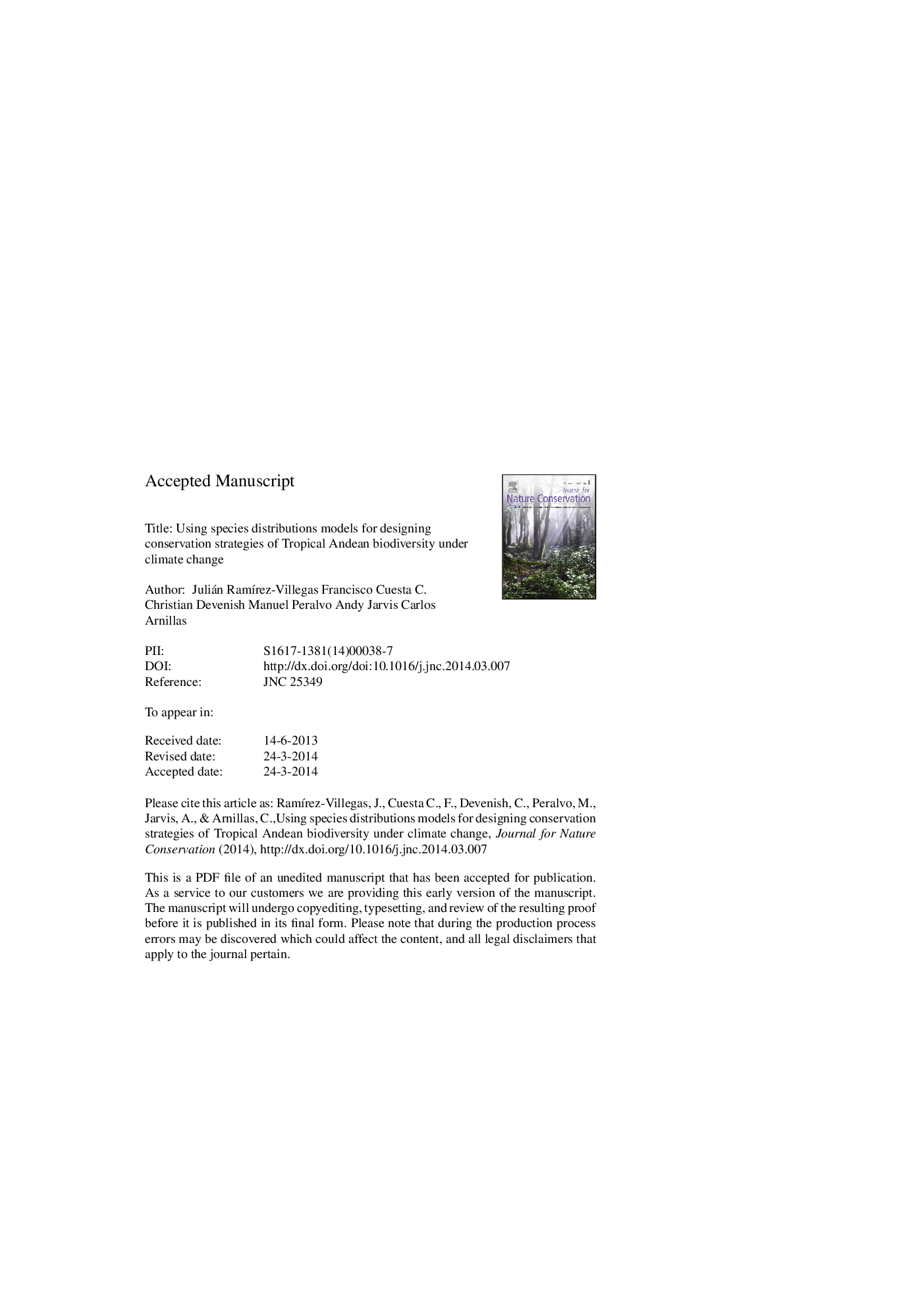| Article ID | Journal | Published Year | Pages | File Type |
|---|---|---|---|---|
| 6305457 | Journal for Nature Conservation | 2014 | 48 Pages |
Abstract
Biodiversity in the Tropical Andes is under continuous threat from anthropogenic activities. Projected changes in climate will likely exacerbate this situation. Using species distribution models, we assess possible future changes in the diversity and climatic niche size of an unprecedented number of species for the region. We modeled a broad range of taxa (11,012 species of birds and vascular plants), including both endemic and widespread species and provide a comprehensive estimation of climate change impacts on the Andes. We find that if no dispersal is assumed, by 2050s, more than 50% of the species studied are projected to undergo reductions of at least 45% in their climatic niche, whilst 10% of species could be extinct. Even assuming unlimited dispersal, most of the Andean endemics (comprising â¼5% of our dataset) would become severely threatened (>50% climatic niche loss). While some areas appear to be climatically stable (e.g. Pichincha and Imbabura in Ecuador; and Nariño, Cauca, Valle del Cauca and Putumayo in Colombia) and hence depict little diversity loss and/or potential species gains, major negative impacts were also observed. Tropical high Andean grasslands (páramos and punas) and evergreen montane forests, two key ecosystems for the provision of environmental services in the region, are projected to experience negative changes in species richness and high rates of species turnover. Adapting to these impacts would require a landscape-network based approach to conservation, including protected areas, their buffer zones and corridors. A central aspect of such network is the implementation of an integrated landscape management approach based on sustainable management and restoration practices covering wider areas than currently contemplated.
Related Topics
Physical Sciences and Engineering
Earth and Planetary Sciences
Earth and Planetary Sciences (General)
Authors
Julian Ramirez-Villegas, Francisco Cuesta, Christian Devenish, Manuel Peralvo, Andy Jarvis, Carlos Alberto Arnillas,
